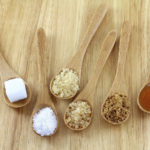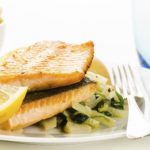Healthy School Lunch?
What do you consider the ideal school lunch?
Andrew Weil, M.D. | September 3, 2010

Originally published 7/13/2009
I don’t think there is any one ideal school lunch, but sending your kids to school with healthy food prepared at home is much better than letting them get their midday meals from cafeterias, on-site fast food outlets, or vending machines. Fortunately, some schools are moving toward a goal of educating children about nutrition, thanks in part to the high-profile efforts of chef Alice Waters of Chez Panisse restaurant in California, celebrity chef Jamie Oliver in England, and determined parents everywhere. You may have read about Alice Waters’ efforts to educate children about food choices through her Edible Schoolyard program launched 10 years ago. The kids plant gardens and eat the harvests, learning about healthy nutrition in the process. The program has been an outstanding success and has inspired similar efforts elsewhere.
If you do pack lunch for your kids, you might be interested in the healthful suggestions of Culinary Coordinator Dena Jaffee, who works with me. For her daughters, ages 12 and 14, Dena tells me that she doesn’t pack lunches in plastic. Instead, she uses stainless steel stackers (a Google search for “stainless steel lunch containers” brings up numerous options) as well as a re-usable sandwich wrap.
In Dena’s view (and mine), an ideal school lunch is low in sugar and high in protein and healthy fats to get kids through their demanding days. Dena makes sandwiches on whole grain bread or tortilla wraps and gives her daughters salad made from wild salmon (she prepares it just as you would make tuna salad, only using canned salmon instead). Dena says that her daughters also like vegetable sandwiches (avocado, mustard, cucumber, carrot and, sometimes, hummus). She usually packs cucumber slices and carrot sticks, cheese and whole grain crackers, plus almonds or walnuts. She doesn’t buy juice boxes or give her daughters juice. Instead, she makes an iced tea that resembles juice (red in color from hibiscus flowers).
Once or twice a week she gives her daughters pasta salad, and in colder weather packs a soup in a thermos (stainless steel on the inside). She also makes nori rolls – rice and vegetables wrapped in sheets of dried, pressed seaweed.
It takes some effort to put together nourishing and appetizing lunches, and if your kids are exposed to the typical school lunch fare, you may not have the easiest time convincing them to make a change. On the other hand, healthy homemade food may attract the attention of other kids and their parents. Dena has already been asked to make school lunches by the parents of some of her daughters’ classmates.
Andrew Weil, M.D.









